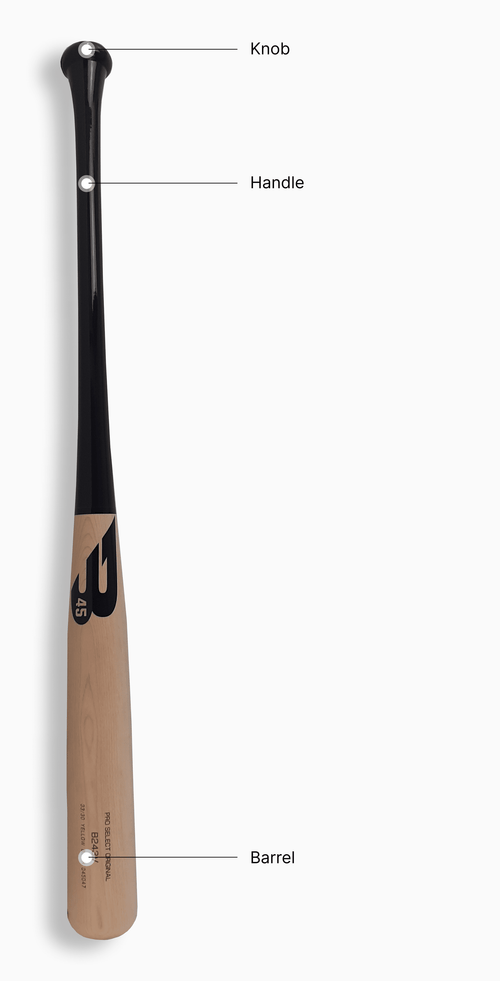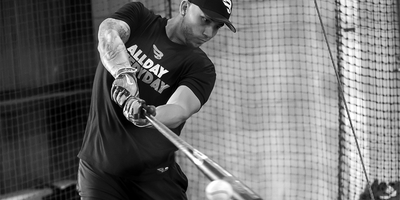Fungo & Training Bats
Shop your selection of training and fungo bats
At B45, we have a wide range of practice bats to suit everyone’s needs, from the players to the coaches. Our high-quality fungo bats are designed to help coaches hit ground balls and fly balls with ease, making training sessions more efficient and productive. More than ever, players are training like the pros and doing everything they can to master the art of hitting and make sure their skills stay sharp. Our extensive training bats lineup is here for that.
...Knob Type refers literally to knob’s shape and dimension. While some are completely square, others are a bit bigger: flared, or even tapered. Choice depends solely on comfort of the hitter. B243v’ knob, on the picture, is flared.
Handle Size directly influences bat’s balance and durability. The bigger it is, the more weight is held closer to the hands. A big handle is also synonym of durability as it’s the focal point of any tension or vibration in a bat. Handle size should also vary according to hitter’s comfort. Standard size is around 0.93”.
Barrel Size influences even more the balance. The bigger it is, the more end-loaded the bat will be. On the contrary, smaller barrels will tend to have much more balance. Barrel Shape also tend to vary. Some have cylinder shape while others are tapered. Most of them are in-between, having a tapered part followed by a varying-length cylinder.
Bat Feel refers to the bat's center of gravity, which is influenced by the size of its handle and barrel. End-loaded bats require more power to generate a quick whip through the strike zone, and controlling their big barrels demands greater strength. In contrast, bats with smaller barrels have their center of gravity closer to the hands, making them feel lighter and easier to control. Ultimately, it’s about how the bat's weight is distributed. There aren’t good or bad models—just ones that are better suited to each swing.













